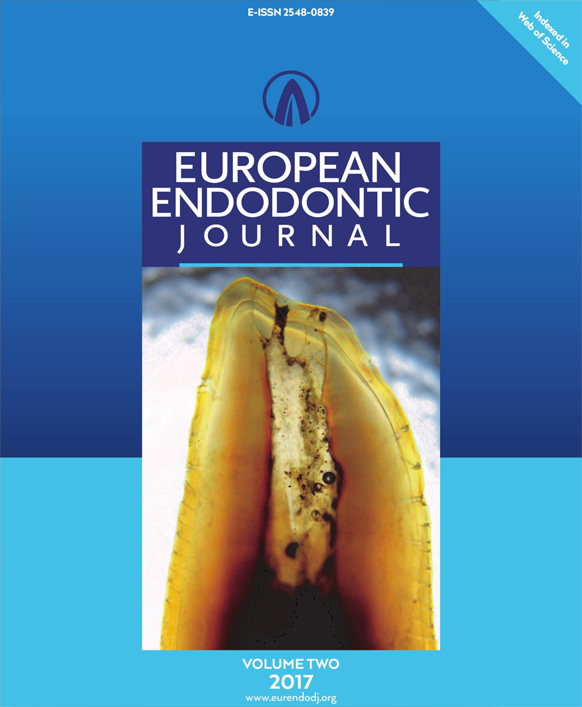
European Endodontic Journal
Yazarlar: Natália Nascimento Gomes, Guilherme Moreira De Carvalho, Emílio Carlos Sponchiado Júnior, Lucas Da Fonseca Roberti Garcia, An Augusto Franco Marques, Fredson Marcio Acris De Carvalh
Konular:-
DOI:10.5152/eej.2017.16037
Anahtar Kelimeler: Environmental scanning electron microscopy,Instrumentation and rotary,Irrigation,Irrigant agitation protocols,Retreatment,Reciprocating motion,Root canal retreatment
Özet: The purpose of this ex vivo study was to evaluate the filling material removal ability, and the time required to perform this procedure, of reciprocating and conventional rotary systems when associated with passive ultrasonic irrigation. Methods: The palatal roots of 40 maxillary molars were submitted to root canal preparation and filling. The desobturation of root canals was initially performed with Largo burs in the coronal portion (4 mm) to drill the gutta-percha and to facilitate the action of the instruments used then. Next, the palatal roots were randomly distributed (n=10) according to the systems and irrigation protocols used for filling material removal: ProTa- per universal retreatment (PTR), PTR+passive ultrasonic irrigation (PUI) (PTR+PUI), Reciproc system (RS), and RS+PUI. Passive ultrasonic activation was performed in the root canals completely filled with 2.5% sodium hypochlorite solution using a smooth and straight ultrasonic tip, coupled to a low-power (20%) ultrasonic device for 1 min (3 cycles of 20 s). After retreatment, the roots were longitudinally sectioned to the remaining filling material quantification using an operating microscope. Environmental scanning electron microscopy (ESEM) micrographs at 97, 105, and 250 X magnifications were also taken to evaluate the quantity of filling material present at the apical portion of the palatal roots. Results: The RS group presented greater quantity of filling material attached to the root canal walls than the other groups (P>0.05). PTR+PUI and RS+PUI groups were statistically similar (P>0.05). Reinstrumentation of root canals using RS was faster than PTR, irrespective of the irrigation protocol used (P>0.05). Conclusion: The association between PUI and the different systems for reinstrumentation yielded greSater filling material removal. The reciprocating system was faster.